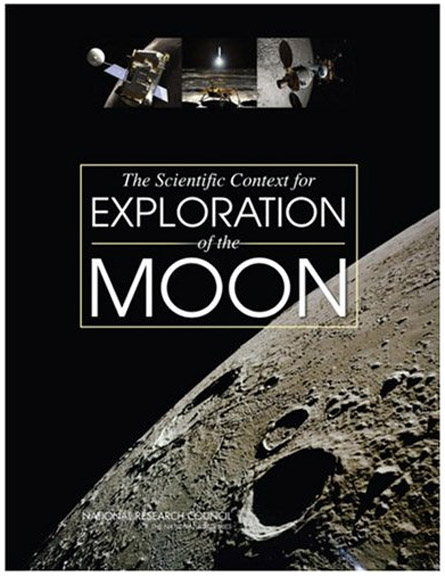
book available from National Research Council
Most lunar scientists could come up with similar lists of important scientific questions that should be addressed when we return to the Moon. But those opinions don’t matter unless the scientists are on a large committee that studies the issue and publishes a book under the auspices of a prestigious national society. That has just happened. The National Research Council has produced The Scientific Context for Exploration of the Moon, which you can buy for $25, or download for free. The recommendations offered are based on the technologic capabilities expected to be available during the next 15-20 years as the US sends robotic precursor spacecraft to the Moon and then the initial human missions. After some expected words about NASA redeveloping a lunar scientific community and working with other countries (they will have most of the new data), the first scientific recommendation is to sample the South Pole - Aitken Basin. This is important because, as the deepest hole on the Moon, it offers the best chance to bring back rocks from the lower crust and mantle, and, from determination of the basin’s formation age, to help decide if the Lunar Cataclysm really occured. The second recommendation is to return to Earth samples from a variery of different terrains so we can better understand the diversity and history of the Moon’s thermal and compositional history. These are very broad goals and there will be - if we really do return to the Moon to stay - future objectives to sample specific areas of high scientific interest. Possibilities could be the very young activity at Ina, the billion year old basalts near Lichtenberg, the Reiner Gamma anomaly, and the possibility that some highland smooth plains are as yet un-sampled ancient volcanism. Stay tuned for a few decades, or more, for answers.
Yesterday's LPOD: The Last Word on the Alps
Tomorrow's LPOD: A Swell New Dome
COMMENTS?
Register, Log in, and join in the comments.



